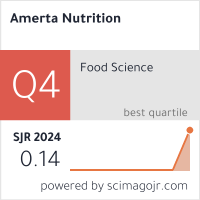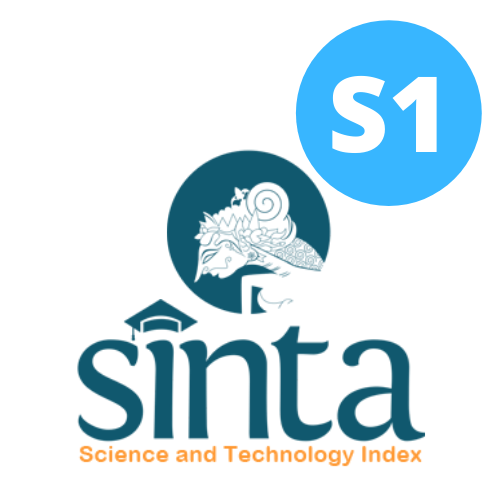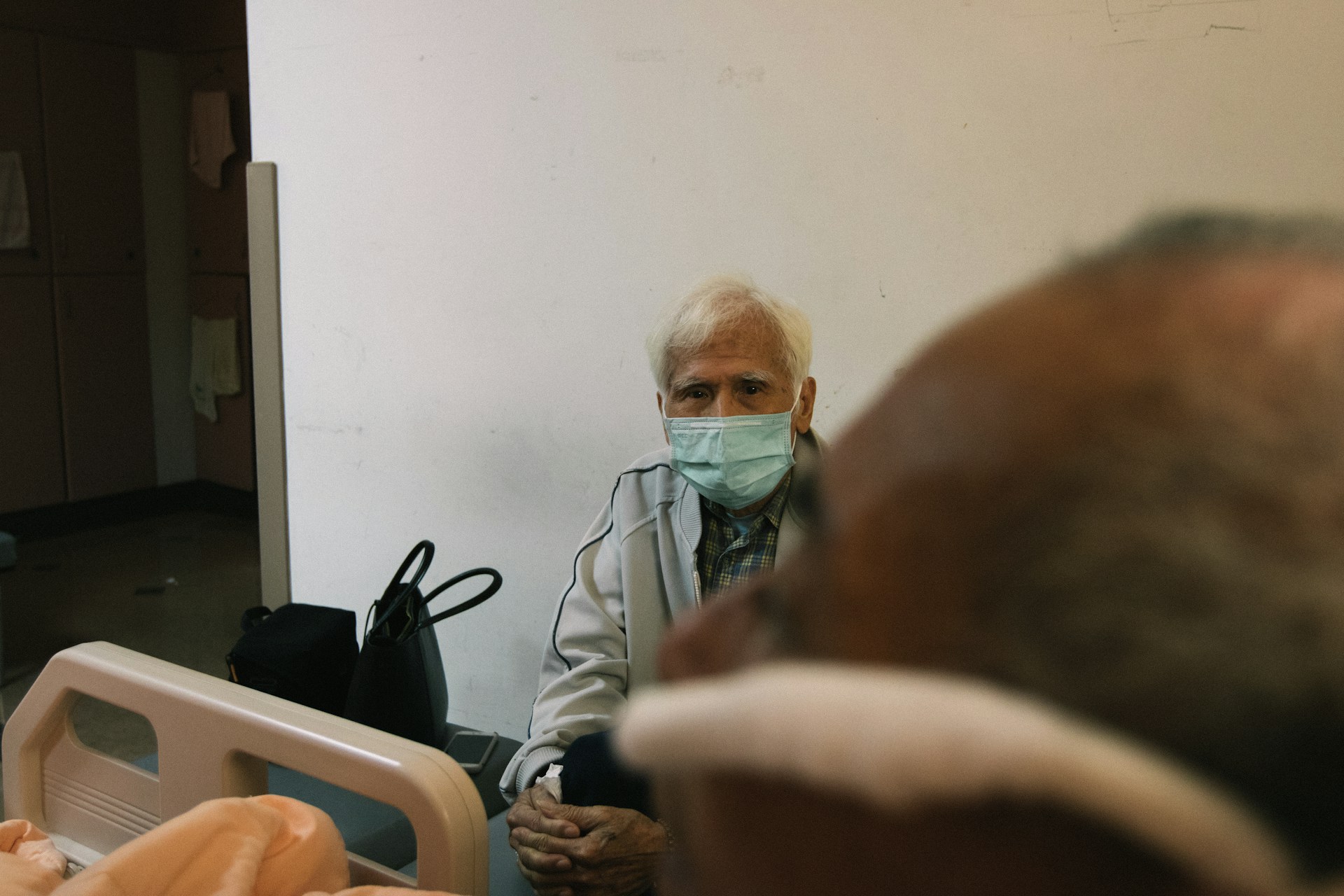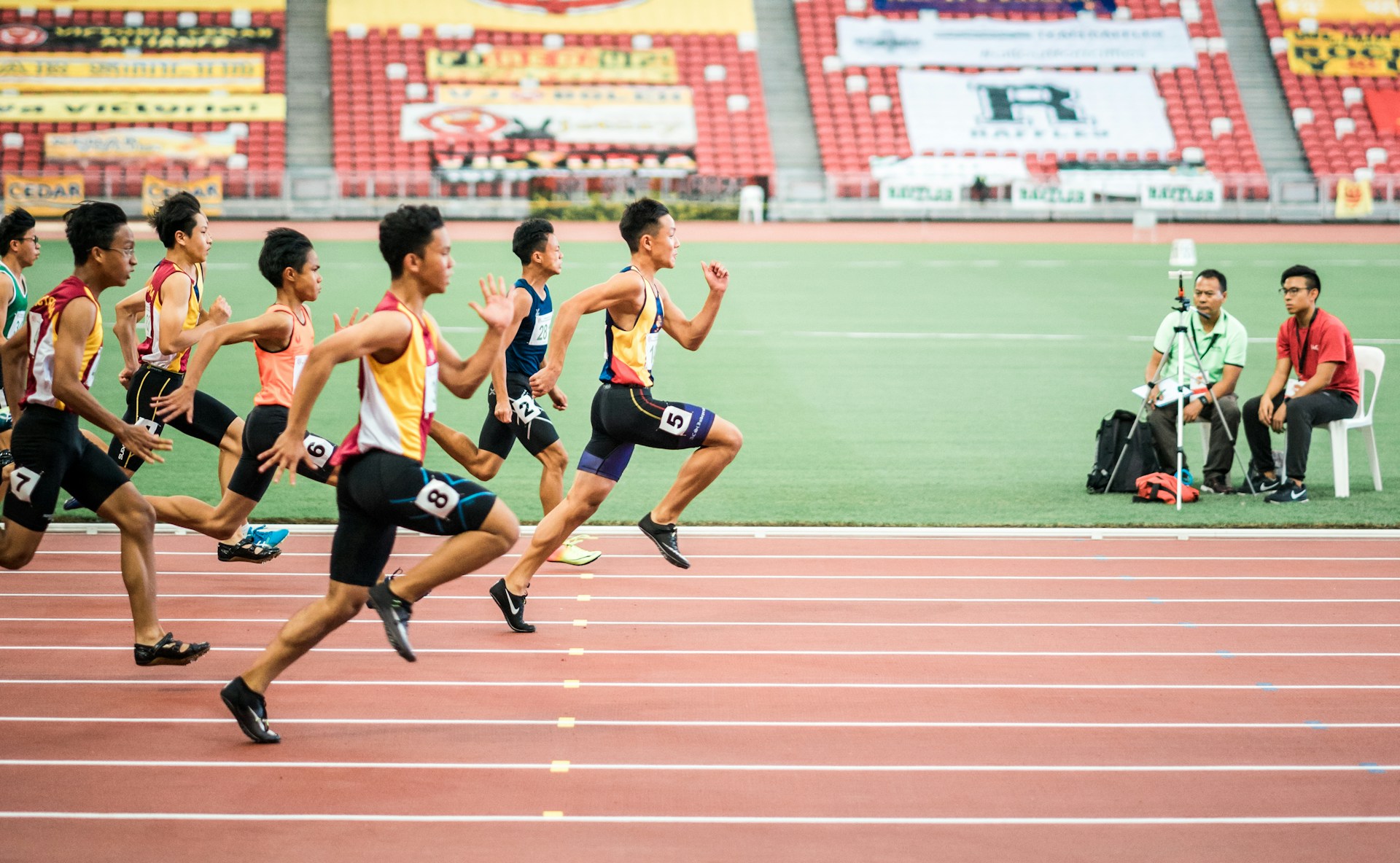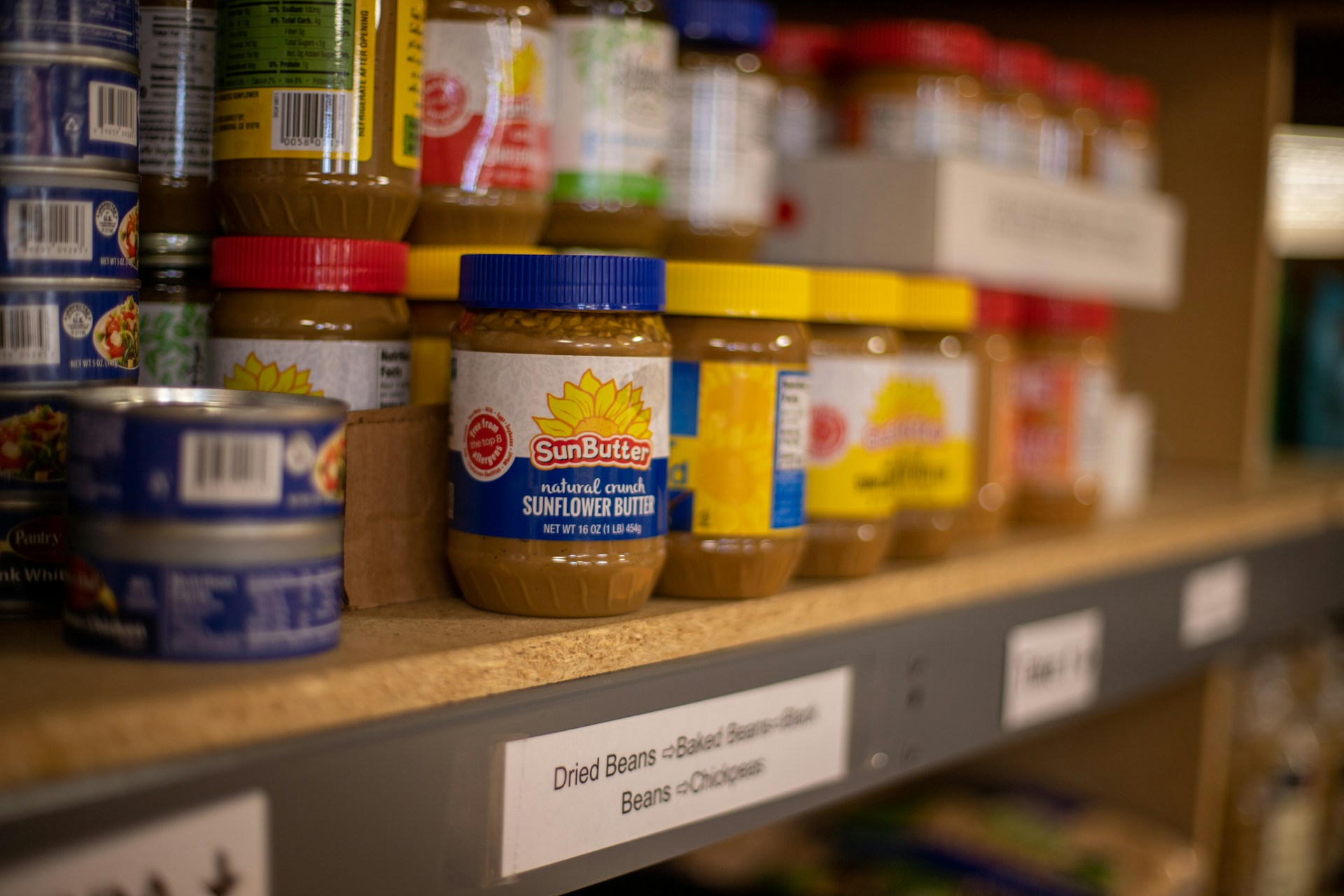Low Birth Weight, Child Gender, Number of Children, and Maternal Education as Risk Factors for Stunting in Palu City - Indonesia
Berat Lahir Rendah, Jenis Kelamin Anak, Jumlah Anak dan Pendidikan Ibu Sebagai Faktor Risiko Stunting di Kota Palu - Indonesia

Downloads
Background: The worldwide issue of stunting, which is prevalent up to 20.5%, can have an impact on future productivity and health
Objectives: to determine the risk factors and prevalence of stunting in children aged 0-23 months in Palu City, Indonesia.
Methods: This study used a cross-sectional analytical design in eight sub-districts of Palu City (January-June 2024), involving 516 pairs of mothers and children aged 0-23 months. Data were collected by 20 enumerators under the supervision of the Health Office, through interviews related to breastfeeding, complementary feeding, infection history, and other variables as well as anthropometric measurements using length Board Measuring calibrated tools. The data were analyzed using univariate analysis, chi-square test bivariate, and logistic regression. Data collection is carried out through the Cobocollect platform.
Results: Logistic regression analysis shows several important findings. Children of mothers with low education (OR=1.9), male children (OR=2.2), low birth weight (OR=3.1), and families with more than 3 children (OR=2.1) have a higher risk of stunting. Of the 516 children, 20.5% experienced stunting. These findings highlight the importance of maternal education, gender, birth weight, and number of children as risk factors for stunting, as well as their implications for health policies.
Conclusions: Factors such as low birth weight, male sex, the number of children over three, and mothers' education of less than 9 years significantly increased the risk of stunting in children. Targeted nutrition interventions for mothers with low education and families with many children are essential to reduce the prevalence of stunting in Palu City.
Dadras, O., Suwanbamrung, C., Jafari, M. & Stanikzai, M. H. Prevalence of stunting and its correlates among children under 5 in Afghanistan: the potential impact of basic and full vaccination. BMC Pediatr. 24, 436 (2024). https://doi.org/10.1186/s12887-024-04913-w.
Goddard, F. G. B. et al. Prevalence, Incidence, and Reversal Pattern of Childhood Stunting From Birth to Age 2 Years in Ethiopia. JAMA Netw. Open 7, e2352856 (2024). https://doi.org/10.1001/jamanetworkopen.2023.52856.
Sugianti, E., Putri, B. D. & Buanasita, A. Peran Ayah terhadap Kejadian Stunting pada Balita di Perdesaan. Amerta Nutr. 8, 214–221 (2024). https://doi.org/10.20473/amnt.v8i2.2024.214-221.
Atlas, H. E. et al. Prevalence and Correlates of Stunting among a High-Risk Population of Kenyan Children Recently Hospitalized for Acute Illnesses. Am. J. Trop. Med. Hyg. 110, 356–363 (2024). https://doi.org/10.4269/ajtmh.23-0050.
Mhamad, H. J. et al. Prevalence and predictive factors associated with stunting in preschool children in a governorate of Iraq: a community-based cross-sectional study. Front. Nutr. 11, (2024). https://doi.org/10.3389/fnut.2024.1322625.
Seretew, W. S., Tesema, G. A., Yirsaw, B. G. & Argaw, G. S. Prevalence of stunting and associated factors among under-five children in sub-Saharan Africa: Multilevel ordinal logistic regression analysis modeling. PLoS One 19, e0299310 (2024). https://doi.org/10.1371/journal.pone.0299310.
Dewi, N. K., Retno Kusumasari, H. A., Andarini, S. & Indrawan, I. W. A. Nutritional Factors Affecting Stunting Among Toddlers. Amerta Nutr. 7, 25–29 (2023). https://doi.org/10.20473/amnt.v7i1SP.2023.25-29.
Pertiwi, A. N. A. M. & Hendrati, L. Y. Literature Review: Analisis Penyebab Kejadian Stunting pada Balita di Provinsi Jawa Timur. Amerta Nutr. 7, 320–327 (2023). https://doi.org/10.20473/amnt.v7i2SP.2023.320-327.
Hafid, F., Nasrul, Ramadhan, K., Cahyani, Y. E. & Sarimin, S. Exploring Stunting Risk Factors in Palu City: Maternal Education, Occupation, Caesarean Delivery, and Child’s History of Illness. in Proceedings of the 6th International Conference of Health Polytechnic Surabaya (ICoHPS 2023) 375–390 (atlantis-press.com, 2023). doi:10.2991/978-94-6463-324-5_38. https://doi.org/10.2991/978-94-6463-324-5_38.
De Sanctis, V. et al. Early and Long-term Consequences of Nutritional Stunting: From Childhood to Adulthood. Acta bio-medica 92, e2021168 (2021). https://doi.org/10.23750/abm.v92i1.11346.
Harper, A., Rothberg, A., Chirwa, E., Sambu, W. & Mall, S. Household Food Insecurity and Demographic Factors, Low Birth Weight and Stunting in Early Childhood: Findings from a Longitudinal Study in South Africa. Matern. Child Health J. 27, 59–69 (2023). https://doi.org/10.1007/s10995-022-03555-7.
Vats, H., Walia, G. K., Saxena, R., Sachdeva, M. P. & Gupta, V. Association of Low Birth Weight with the Risk of Childhood Stunting in Low- and Middle-Income Countries: A Systematic Review and Meta-Analysis. Neonatology 121, 244–257 (2024). https://doi.org/10.1159/000532006.
Addae, H. Y. et al. Low birth weight, household socio-economic status, water and sanitation are associated with stunting and wasting among children aged 6–23 months: Results from a national survey in Ghana. PLoS One 19, e0297698 (2024). https://doi.org/10.1371/journal.pone.0297698.
Thurstans, S. et al. Anthropometric deficits and the associated risk of death by age and sex in children aged 6–59 months: A meta‐analysis. Matern. Child Nutr. 19, (2023). https://doi.org/10.1111/mcn.13431.
Garenne, M. et al. Changing sex differences in undernutrition of African children: findings from Demographic and Health Surveys. J. Biosoc. Sci. 54, 847–857 (2022). https://doi.org/10.1017/S0021932021000468.
Thurstans, S. et al. How age and sex affect treatment outcomes for children with severe malnutrition: A multi‐country secondary data analysis. Matern. Child Nutr. 20, (2024). https://doi.org/10.1111/mcn.13596.
Nashira, I. T., Kusnandar & Sukamto, I. S. Family Factors Related to Stunting: Number of Family Members, Mother’s Education Level, and Working Mother in Children aged 24-59 Months in Sungai Penuh City Jambi Province, Indonesia in Prosiding Sains dan Teknologi Nusantara (nstproceeding.com, 2024). https://doi.org/10.11594/nstp.2024.4206.
Bisai, S., Mahalanabis, D., Sen, A. & Bose, K. Maternal education, reported morbidity and number of siblings are associated with malnutrition among lodha preschool children of paschim medinipur, West Bengal, India. Int. J. Pediatr. 2, 13–21 (2014). https://doi.org/https://doi.org/10.22038/ijp.2014.3363.
Hafid, F., Nasrul, N., Adhyanti, A. & Bohari, B. Social and Health Determinants of the Families of Children Under Two Years of Age with Stunting in Sigi District. Poltekita J. Ilmu Kesehat. 17, 137–146 (2023). https://doi.org/10.33860/jik.v17i1.2252.
Lawal, S. A., Okunlola, D. A., Adegboye, O. A. & Adedeji, I. A. Mother’s education and nutritional status as correlates of child stunting, wasting, underweight, and overweight in Nigeria: Evidence from 2018 Demographic and Health Survey. Nutr. Health 026010602211463 (2023) doi:10.1177/02601060221146320. https://doi.org/10.1177/02601060221146320.
Agyen, V. A., Annim, S. K. & Asmah, E. E. Neighbourhood mothers’ education and its differential impact on stunting: Evidence from 30 Sub-Saharan African countries. Soc. Sci. Med. 340, 116462 (2024). https://doi.org/10.1016/j.socscimed.2023.116462.
Sarwar, A., Jadoon, A. K., Chaudhry, M. A., Latif, A. & Javaid, M. F. How important is parental education for child nutrition: analyzing the relative significance of mothers’ and fathers’ education. Int. J. Soc. Econ. (2024) doi:10.1108/IJSE-06-2023-0483. https://doi.org/10.1108/IJSE-06-2023-0483.
Mitra, M., Lita, L., Mardeni, M. & Nurlisis, N. Effectiveness of the Stunting Education and Anticipation System on Improving Knowledge, Attitudes, and Practices of Mothers about Stunting; A Case Study of Pekanbaru City. Heal. Educ. Heal. Promot. 11, 195–201 (2023). https://doi.org/10.58209/hehp.11.2.195.
Hafid, F., Nasrul, Ramadhan, K., Cahyani, Y. E. & Sarimin, S. Exploring Stunting Risk Factors in Palu City: Maternal Education, Occupation, Caesarean Delivery, and Child’s History of Illness. in Proceedings of the 6th International Conference of Health Polytechnic Surabaya (ICoHPS 2023) 375–390 (2023). doi:10.2991/978-94-6463-324-5_38. https://doi.org/10.2991/978-94-6463-324-5_38.
Permatasari, R. P., Simbolon, D. & Yunita, Y. Pencegahan Stunting melalui Pemberian ASI Eksklusif di Indonesia: Pendekatan Meta-Analisis. Amerta Nutr. 8, 105–112 (2024). https://doi.org/10.20473/amnt.v8i1SP.2024.105-112.
Pradana, V. N., Suparmi, S. & Ratnawati, R. Personal Higiene, Ketersediaan Air, dan Sanitasi Lingkungan dengan Kejadian Stunting pada Balita Usia 6–59 Bulan di Wilayah Kerja Puskesmas Singorojo I, Kabupaten Kendal. Amerta Nutr. 7, 421–426 (2023). https://doi.org/10.20473/amnt.v7i3.2023.421-426.
Rachmah, Q., Indriani, D., Hidayah, S., Adhela, Y. & Mahmudiono, T. Pendidikan Gizi Gemar Makan Ikan Sebagai Upaya Peningkatan Pengetahuan Ibu tentang Pencegahan Stunting Di Desa Gempolmanis Kecamatan Sambeng Kabupaten Lamongan Provinsi Jawa Timur. Amerta Nutr. 4, 165 (2020). https://doi.org/10.20473/amnt.v4i2.2020.165-170.
Nasrul, N., Hafid, F., Faisal, T. I., Taufiqurrahman, T. & Ramadhan, K. Identifying risk factors and recommending interventions to reduce stunting in Sigi Regency. Nutr. Clínica y dietética Hosp. 44, 227–234 (2024). https://doi.org/10.12873/443nasrul.
Halli, S. S., Biradar, R. A. & Prasad, J. B. Low Birth Weight, the Differentiating Risk Factor for Stunting among Preschool Children in India. Int. J. Environ. Res. Public Health 19, 3751 (2022). https://doi.org/10.3390/ijerph19073751.
Saleh, A., Syahrul, S., Hadju, V., Andriani, I. & Restika, I. Role of Maternal in Preventing Stunting: a Systematic Review. Gac. Sanit. 35, S576–S582 (2021). https://doi.org/10.1016/j.gaceta.2021.10.087.
Ibad, M., Lutfiya, I., Sofiyah, Handayani, D. & Muna, K. U. N. El. Acceptance Analysis of Electronic Application Ready for Marriage and Pregnancy (Elsimil) Based on the Technology Acceptance Model (Tam) Approach. Rev. Gestão Soc. e Ambient. 18, e05628 (2024). https://doi.org/10.24857/rgsa.v18n5-084.
Maulina, R., Qomaruddin, M. B., Prasetyo, B. & Indawati, R. Maternal Complications during Pregnancy and Risk Factors for Stunting. Iran. J. Nurs. Midwifery Res. 29, 309–313 (2024). https://doi.org/10.4103/ijnmr.ijnmr_358_22.
Sari, D. K., Amelia, R., Masyithah, D. & Tantrakarnapa, K. Low serum lipase levels in mothers of children with stunted growth indicate the possibility of low calcium absorption during pregnancy: A cross-sectional study in North Sumatra, Indonesia. PLoS One 19, e0298253 (2024). https://doi.org/10.1371/journal.pone.0298253.
Rezaeizadeh, G. et al. Maternal education and its influence on child growth and nutritional status during the first two years of life: a systematic review and meta-analysis. eClinicalMedicine 71, 102574 (2024). https://doi.org/10.1016/j.eclinm.2024.102574.
Chinnakotla, B. et al. Associations between Maternal Education and Child Nutrition and Oral Health in an Indigenous Population in Ecuador. Int. J. Environ. Res. Public Health 20, 473 (2022). https://doi.org/10.3390/ijerph20010473.
Liu, C. & Eriksson, T. Maternal education, child health and nutrition — evidence from China’s compulsory education law. Appl. Econ. 55, 4455–4468 (2023). https://doi.org/10.1080/00036846.2022.2129570.
Edafioghor, L. O., Ezeonu, C. T., Asiegbu, U. V. & Iheme, G. O. Nutrition Education Intervention on maternal knowledge, and perception toward infant and young child feeding in Abakaliki Metropolis, Nigeria. North African J. Food Nutr. Res. 7, 1–12 (2023). https://doi.org/10.51745/najfnr.7.16.1-12.
Mahmudiono, T., Nindya, T. S., Rachmah, Q., Segalita, C. & Wiradnyani, L. A. A. Nutrition Education Intervention Increases Fish Consumption among School Children in Indonesia: Results from Behavioral Based Randomized Control Trial. Int. J. Environ. Res. Public Health 17, 6970 (2020). https://doi.org/10.3390/ijerph17196970.
Mahmudiono, T., Ardianti, B. P., Kombih, M. F., Amira, K. A. & Indriani, D. Nutritional education intervention by giving snakehead fish meatball to increasing nutritional status of childhood stunting and improvement of mother’s care patterns in lamongan district. Syst. Rev. Pharm. 11, 400–405 (2020). https://doi.org/10.31838/srp.2020.8.58.
Pratiwi, R. The Effectiveness of Smartphone-Based Nutrition Education Intervention in Successful Practice of Exclusively Breastfeeding: A Meta-Analysis. Amerta Nutr. 7, 615–625 (2023). https://doi.org/10.20473/amnt.v7i4.2023.615-625.
Muhamad, Z. et al. Preliminary Study: The Effectiveness of Nutrition Education Intervention Targeting Short-Statured Pregnant Women to Prevent Gestational Stunting. Nutrients 15, 4305 (2023). https://doi.org/10.3390/nu15194305.
Lee, K. & Zhao, S. Do Household Headship and Gender Affect Diet Quality under the Supplemental Nutrition Assistance Program (SNAP)? Am. J. Heal. Promot. 38, 349–354 (2024). https://doi.org/10.1177/08901171231211158.
Thurstans, S. et al. Anthropometric deficits and the associated risk of death by age and sex in children aged 6–59 months: A meta‐analysis. Matern. Child Nutr. 19, (2023). https://doi.org/10.1111/mcn.13431.
Garenne, M. et al. Changing sex differences in undernutrition of African children: findings from Demographic and Health Surveys. J. Biosoc. Sci. 54, 847–857 (2022). https://doi.org/10.1017/S0021932021000468.
Copyright (c) 2024 Amerta Nutrition

This work is licensed under a Creative Commons Attribution-ShareAlike 4.0 International License.
AMERTA NUTR by Unair is licensed under a Creative Commons Attribution-ShareAlike 4.0 International License.
1. The journal allows the author to hold the copyright of the article without restrictions.
2. The journal allows the author(s) to retain publishing rights without restrictions
3. The legal formal aspect of journal publication accessibility refers to Creative Commons Attribution Share-Alike (CC BY-SA).
4. The Creative Commons Attribution Share-Alike (CC BY-SA) license allows re-distribution and re-use of a licensed work on the conditions that the creator is appropriately credited and that any derivative work is made available under "the same, similar or a compatible license”. Other than the conditions mentioned above, the editorial board is not responsible for copyright violation.






